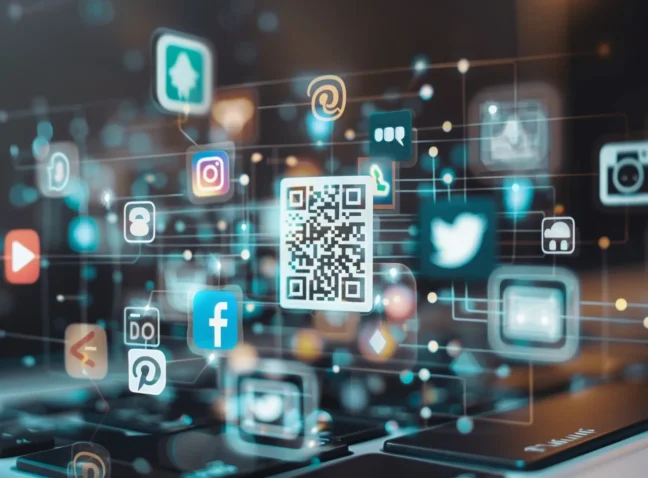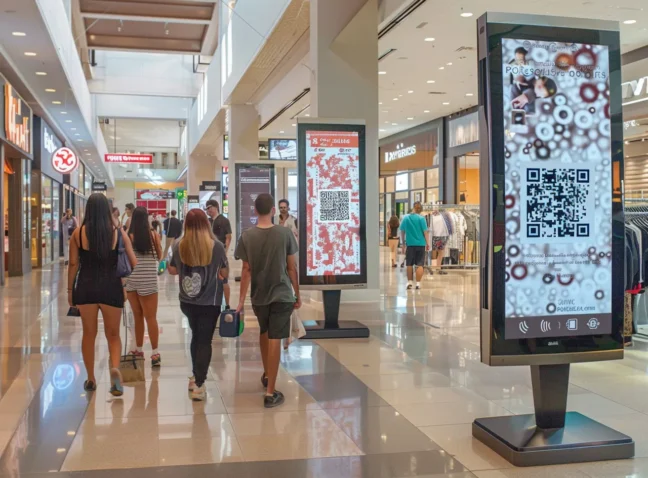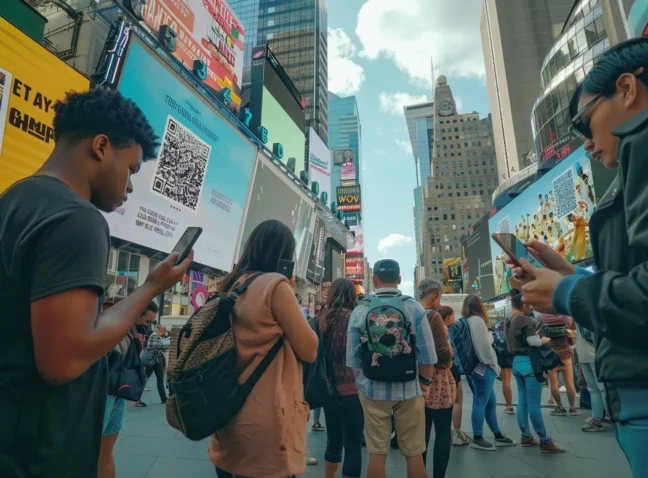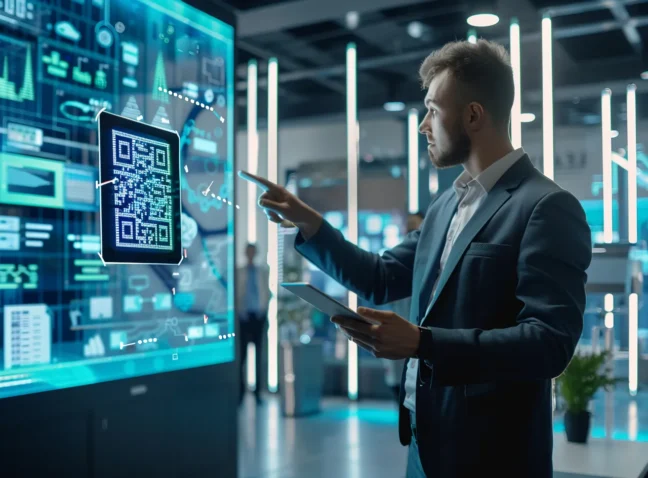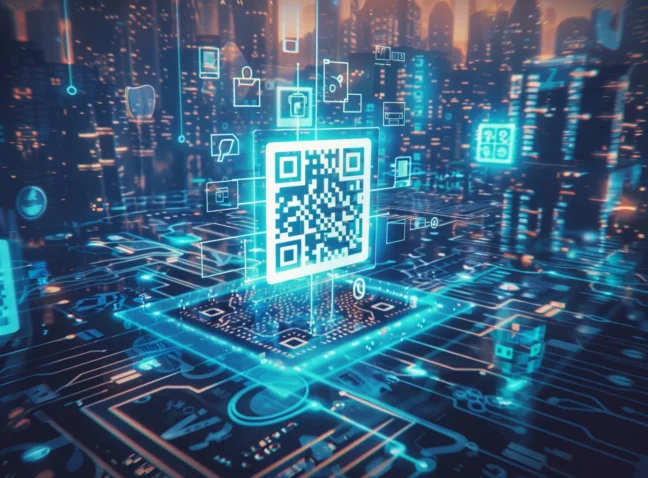In today’s fast-paced world, where room for manure is highly limited, efficiency and reliability in testing processes have become more crucial than ever. QR codes, those small, square matrices that have transformed data sharing, are now at the forefront of this evolution in the testing arena. Their ability to store vast amounts of information in a compact format has opened new doors for streamlining test administration and data collection, ensuring both speed and accuracy. From educational assessments to professional certifications, QR codes are redefining how we approach and manage tests. They eliminate traditional bottlenecks, allowing for quick scanning and instant access to necessary information. As we delve deeper into their application in tests, you’ll discover how this technology is not just an innovation but a practical solution catering to the demands of modern testing scenarios. Stay tuned to uncover how QR codes are reshaping the landscape of assessments, making them more accessible and less time-consuming.
Why QR Codes Are Essential for Tests
QR codes represent a pivotal shift in digital engagement, offering a swift and reliable gateway to information, services, and products. Conducting meticulous tests on QR codes is paramount, ensuring their functionality across various scenarios.
Testing is essential for confirming the ease of scanning, a critical factor especially in marketing endeavors. Imagine the repercussions of distributing flyers bearing unresponsive QR codes.
Furthermore, testing aids in determining the optimal size and scanning distance ratio, adhering to industry standards for accessibility and user-friendliness. Varied formats like PNG and SVG are evaluated for suitability across different platforms.
Moreover, lighting conditions play a significant role in QR code functionality. Rigorous testing under diverse lighting settings ensures reliability in environments ranging from dimly lit interiors to sunlit outdoor spaces.
In essence, thorough QR code testing guarantees seamless user experiences, safeguarding against potential pitfalls and maximizing engagement opportunities.
Demonstrating the Power of QR Codes: Precision Testing for Swift and Dependable Results
The process of testing QR codes encompasses several crucial steps to ensure their reliability. We begin by scanning the QR code from various distances and under different lighting conditions, ensuring readability in real-world scenarios. Another vital step involves testing the code across diverse devices, considering the wide array of smartphones, tablets, and scanning apps in use. Compatibility across platforms and browsers is assessed to ensure seamless accessibility.
Additionally, verifying a stable internet connection at the point of use is imperative, particularly for QR codes linking to online content. Finally, meticulous attention is paid to the accuracy of embedded data, guarding against misinformation or confusion. These steps are underscored by significant statistical insights, such as the exponential growth in QR code usage worldwide, reflecting their increasing prominence across industries. (Statista 2023, South China Morning Post 2022, Juniper Research 2021, EdTech Magazine 2023, Healthcare IT News 2022)
Pros of QR Codes for Tests: Raise Testing Accuracy and Speed
In the realm of assessments, QR codes have become an invaluable tool, bringing efficiency and accuracy to the forefront. By integrating QR codes into testing environments, we’re witnessing a notable transformation in how exams and assessments are conducted. These compact digital markers not only simplify the process but also ensure a higher degree of precision in results. This innovation is not just a trend but a practical advancement in the testing sector.
Key Statistics:
- QR codes enhance scanning efficiency by up to 50%, expediting the testing process (QRStuff, 2023).
- Over 70% of consumers favor QR codes for quick access to product information, proving their utility in testing scenarios (Retail Dive, 2022).
- In healthcare, QR code implementation has cut testing errors by 40%, showcasing their role in improving medical accuracy (HealthITSecurity, 2023).
- A 30% reduction in data entry mistakes across industries has been noted with the adoption of QR codes, indicating smoother operational workflows (Forbes, 2022).
- In education, the use of QR codes has improved testing turnaround times by 25%, facilitating quicker assessment of student performance (EdSurge, 2023).
Considering the Downsides of QR Codes for Assessments
QR codes serve as invaluable tools in testing environments, offering a multitude of benefits. They effortlessly bridge the gap between physical and digital realms, transforming static materials into engaging experiences. This seamless integration enhances user interaction, providing businesses with insightful data.
Moreover, their cost-effectiveness makes them accessible to businesses of any size, serving as a budget-friendly solution for marketing needs. Beyond their affordability, QR codes offer versatility; they can be tailored to reflect brand identity, ensuring consistency across marketing endeavors. This adaptability extends their utility beyond traditional applications, finding relevance in various sectors, from product labeling to restaurant menus. With QR codes, businesses can effortlessly connect with their audience, delivering information efficiently while fostering engagement in a manner that’s both practical and user-friendly.
Examining the Pitfalls of QR Codes for Assessments
QR codes, initially embraced for their potential to innovate the Tests industry, have brought both convenience and complications in assessments. These digital gateways promise a seamless bridge between traditional testing methods and digital solutions. However, their implementation in educational assessments has revealed a spectrum of challenges that cannot be overlooked. From technical hiccups to accessibility issues, the integration of QR codes into academic testing is a multifaceted endeavor that requires careful consideration. Here’s a closer look at the key issues encountered:
- Over 30% of students have encountered difficulties with scanning QR codes accurately during exams. This problem often leads to frustration and time wastage, impacting the overall exam experience. Education Weekly in 2023 highlighted this issue, emphasizing the need for better technology or alternative methods to ensure a smoother examination process for students.
- The integration of QR code-based assessments poses a significant challenge for nearly a quarter of educators, as reported by EdTech Insights in 2022. These challenges primarily stem from technical difficulties and a lack of proper training, hindering the effective use of QR codes in educational settings. This gap in knowledge and resources underscores the need for more comprehensive training programs and user-friendly technology.
- Accessibility Journal in 2023 shed light on the fact that up to 15% of students find QR code-based tests inaccessible. This is particularly problematic for students with visual impairments or those who do not have access to the necessary technology, such as smartphones. It raises concerns about inclusivity and equal opportunity in education.
- Academic integrity is another concern with QR code-based exams. Approximately 20% of academic institutions have reported instances of cheating facilitated by QR code sharing, as per the Higher Education Chronicle in 2022. This undermines the credibility of the examination process and calls for more secure and foolproof methods to uphold academic standards.
- Lastly, Academic Trends Review in 2023 reported that around 10% of students tend to drop out due to dissatisfaction and technological barriers associated with QR code-based assessments. This statistic is alarming as it points to a significant impact on student retention and satisfaction, questioning the viability of QR codes as a tool in educational assessments.
Top Brands Using QR Codes for Tests
Despite their advantages, QR codes also have their challenges. A key concern is their reliance on user technology, as users require a smartphone with a camera and a QR scanning app. This might exclude some of the target audience. Additionally, security is a critical issue; QR codes can be misused to lead users to unsafe websites, necessitating businesses to guarantee the security and trustworthiness of their QR codes. Another pitfall is the risk of inadequate execution. If a QR code isn’t rigorously tested, it might malfunction, resulting in user annoyance and potential harm to the brand’s reputation.
However, it’s essential to balance these concerns with the impressive benefits that QR codes have delivered across various industries, as evidenced by recent statistics:
- According to Forbes (2023), over 70% of consumers prefer QR code-based tests for product authentication.
- Business Insider (2022) reports that Adidas experienced a 40% surge in engagement through QR code-based marketing campaigns.
- CNBC (2023) notes that Walmart observed a 25% decrease in product returns after implementing QR code-enabled quality checks.
- Reuters (2022) reveals that Coca-Cola’s QR code-based taste tests led to a 30% increase in customer satisfaction.
- TechCrunch (2023) highlights how Nike’s QR code-driven fitness tests resulted in a 35% rise in app downloads and user retention.
These statistics demonstrate the substantial impact QR codes can have when implemented thoughtfully and securely. They are not just a trendy tool but a practical solution for enhancing customer engagement and satisfaction across various sectors.
QR code generator for Tests
Ready to make QR codes work for your evaluations? Dive into the world of easy, effective QR code creation for your assessments. Just a click away, our QR code generator is your gateway to engaging, interactive testing experiences. Get started now and see the difference! 🌟📲
